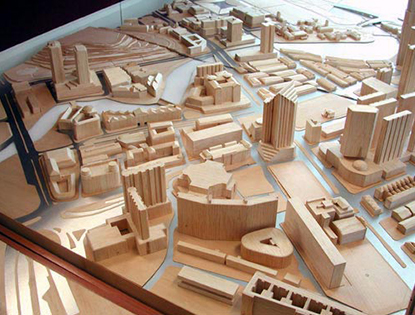
Incredible Miniature Architectural Model Creation

The creation of incredible miniature architectural models is a testament to the skill, patience, and attention to detail of model makers. These tiny, intricate replicas of real-life structures or conceptual designs capture the essence of architecture in a scaled-down, tangible form. The process of creating such remarkable miniatures involves several steps:
Concept and Planning: The model maker begins by studying the architectural drawings, blueprints, and any available reference materials for the project. They then determine the appropriate scale, level of detail, and materials for the model, considering factors such as the purpose of the model, its intended audience, and the project’s budget and timeline.
Material Selection: Model makers choose materials that best represent the design and provide the desired level of detail and durability. Common materials include wood, foam, plastic, acrylic, metal, and paper. The choice of materials often depends on the project’s requirements and the desired aesthetic.

Cutting and Shaping: Using a variety of tools, such as knives, saws, and sanding blocks, the model maker carefully cuts and shapes the materials to create the individual components of the model. Advanced technologies, such as laser cutters, CNC machines, and 3D printers, can also be used to create precise and intricate parts.
Assembly and Detailing: The components are meticulously assembled, often using adhesives or small fasteners, to create the overall structure. Model makers add detailed elements such as doors, windows, and railings, as well as textures and finishes that accurately represent the design. They may also incorporate elements such as landscaping, vehicles, or human figures to provide context and a sense of scale.
Painting and Finishing: The completed model is painted and finished to match the color scheme and material finishes of the design. Model makers use a range of techniques, such as airbrushing, hand-painting, and applying decals, to achieve a realistic and polished appearance.

Lighting and Special Effects: In some cases, model makers may incorporate lighting, moving parts, or other special effects to enhance the model’s visual impact and create a more immersive experience for the viewer.
Display and Presentation: The finished miniature architectural model is carefully mounted on a base or in a display case, ensuring it is protected and well-lit for optimal viewing.
Incredible miniature architectural models are the result of the model maker’s dedication to their craft, combining artistic skill, technical expertise, and a passion for architecture. These captivating models provide architects, clients, and enthusiasts with a tangible representation of a design, allowing them to appreciate its beauty, complexity, and impact on a smaller scale.




0 комментариев
Написать комментарий